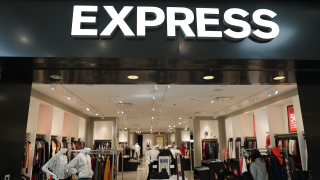I’m sure many of us can recall a time when we’ve been at a party or social gathering and have seen a couple of ladies dancing sexily with each other while being cheered on by mostly male onlookers. We’ve even watched as the men egged them on, often trying to get them to kiss or touch each other in erotic, provocative ways. More often than not, the young women would kiss each other, drink, maybe grind on each other a bit, and receive raucous applause. We may not have known why they did it; we just knew whatever they did caused a lot of hooting, celebrating and attention from the men.
We’ve also seen examples of similar behavior online. In our current social media-driven society, there are much larger audiences of onlookers able to sit back and watch as all types of flirty exchanges take place between women. A decade ago, chat rooms on sites like BlackPlanet.com and AOL were popular forums for this kind of flirty interaction. Today, people use Facebook and, to a greater degree, Twitter to chat with each other in front of hundreds or thousands of onlookers.
It’s not uncommon to see women tweet about enjoying the sight of other women’s breasts or making appreciative comments about women having enticing shapes and figures. One can regularly see women give each other sexually suggestive compliments. Yet many of these women often assert that they aren’t bisexual or lesbians, nor do they identify as being part of the LGBTQ community in any way. While most people think it’s simply another way for heterosexual women to get attention from men, there are other nuanced explanations that dig a bit deeper. What’s going on here?
The term “fauxbian” has been coined to describe women, presumed heterosexual, who appear to only be pretending to be into women sexually, usually to appear “cool” or attractive to men. It is used pejoratively, and the term itself elicits a great deal of backlash. Is every woman who flirts with another online or in the club faking it? Not at all, and it’s unfair to make that general assumption. Sexuality is fluid and sexual identities are constantly evolving as people work on understanding themselves, their preferences and the types of behaviors they’re comfortable engaging in.
Mika* asks, “What if I’m learning/exploring this aspect of my sexuality out loud on [Twitter] for the first time? Using social media as a buffer or stepping stone of sorts? Why can’t that be a thing? Maybe [I’ve] been bi all of my life but Twitter is giving me the confidence to finally act?” For some women, these types of situations are the only times they feel comfortable exploring the side of them that’s attracted to other women; they feel safest in larger groups of people. Many are simply testing the waters and coming out of their shells.
Deanna isn’t convinced that it’s that complex, however. “If you aren’t going to make out with your best friend on the couch on a Monday night, don’t do it in the club for all to see,” she says plainly. While I think most women see the flirting as harmless, there are those who dislike what they see.
Kay* says she thinks so-called fauxbians are offensive to women in the queer community, because they perpetuate negative stereotypes that women only engage in girl-on-girl activity primarily for men’s pleasure. Nate* said, interestingly enough, that most of the men he knows aren’t sincerely interested in serious relationships with women who come off bisexual or into girl-on-girl play. He says many guys actually “freak out” at the idea of their girlfriends being bisexual.
I’ve heard this sentiment before, from men saying they’d feel like they couldn’t totally satisfy a woman’s needs if she’s also sexually attracted to women. Too often, we equate bisexuality with polyamory, and that isn’t what it’s about at all.
Anna* adds, “This ‘fauxbian’ thing only makes things harder for actual bisexual women to gain acceptance in the LGBTQ community.” A number of lesbian women I asked expressed frustration because they’re unable to tell if a woman is genuinely interested in them, and they find themselves feeling deceived. Jim* says that people are simply too concerned with the authenticity of others’ sexuality, focusing too much on labeling and putting people into boxes. He argues that “fauxbian” is too judgmental. Baranda says the term is “too oppressive and restrictive, mak[ing] safe exploration almost impossible.”
Is this more about women exploring their sexuality, or is it about wanting attention and wanting to appear “cool” or “attractive”? Is bisexuality a trendy wagon for folks to hop on, or are people becoming more comfortable with being open about who they are? I’m not sure we can make value judgments either way. What I do know is that we’re witnessing an increase in both the public instances of women openly engaging with other women in sexual ways and in the acceptance (and even encouragement) of it.
As someone who identifies as pansexual, I admit that I’ve felt my own frustration watching women flirt with other women and then talk about homosexuality being a sin, for example. I do like that people seem to be experiencing less direct backlash and condemnation though. I can’t pretend to understand everyone’s motives for their actions. I can only hope that in everything women and men choose to do sexually, they do so in ways that remain physically and emotionally safe and beneficial.
*All names changed to protect the guilty.
Feminista Jones is a sex-positive Black feminist, social worker and blogger from New York City. She writes about gender, race, politics, mental health and sexuality at FeministaJones.com. Follow her on Twitter at @FeministaJones.













